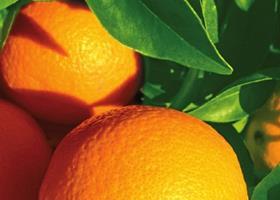
California's Central Valley is in the midst of a cold snap that has citrus growers more than a little concerned for their crop. Temperatures dipped below freezing point in growing areas between Fresno and Bakersfield on Wednesday night and early Thursday morning, but did not hit the extremely low temperatures that had been predicted.
'We had some cloud cover along the eastern side of the valley `where most of the citrus is planted` that kept things warmer than we'd originally thought,' Tom Wollenman of Lo Bue Citrus told Fruitnet.com. 'Basically, it's been a non-event so far. The weather guys are talking about similar temperatures tonight `Thursday/Friday` – maybe a few degrees colder. If that turns out to be the case, the industry will have dodged the bullet.'
A November hard-freeze in the Central Valley is almost without precedent, with such conditions historically hitting crops during December/January.
'It's very early in the season for these kind of temperatures,' admitted Mr Wollenman. 'Sugars are still quite low and so the fruit doesn't have the natural protection it will have later on. Also, several thousand acres of mandarins have been planted `in the Central Valley` over the last couple of years on ground where citrus has really never been grown before. That means there are a lot of small trees that are pretty vulnerable `to a freeze`.'
Chilly temperatures so early in the season can have a beneficial side, however.
'If it doesn't get too cold, there are definitely some 'positives' that can come from this,' said Mr Wollenman. 'For one thing it will snap-on fruit colouring. It also will send trees into dormancy, which will help if we get a repeat cold event in December or January.'
California is just beginning its navel orange shipments and the USDA has predicted a possible record packout of over 90m cartons this season.
Citrus growers have taken precautions to help their crops withstand the freezing temperatures, although their fate ultimately will be decided by how low temperatures drop, and for how long, over the next few days. Many producers have their water systems running during the day, which helps to boost moisture levels and can inch up temperatures. Some have also been testing their wind machines, which can also raise air temperatures.
Previous major freezes to hit the California citrus industry struck in 2007 and 1998, causing an estimated US$700m and US$800m worth of damages respectively.



